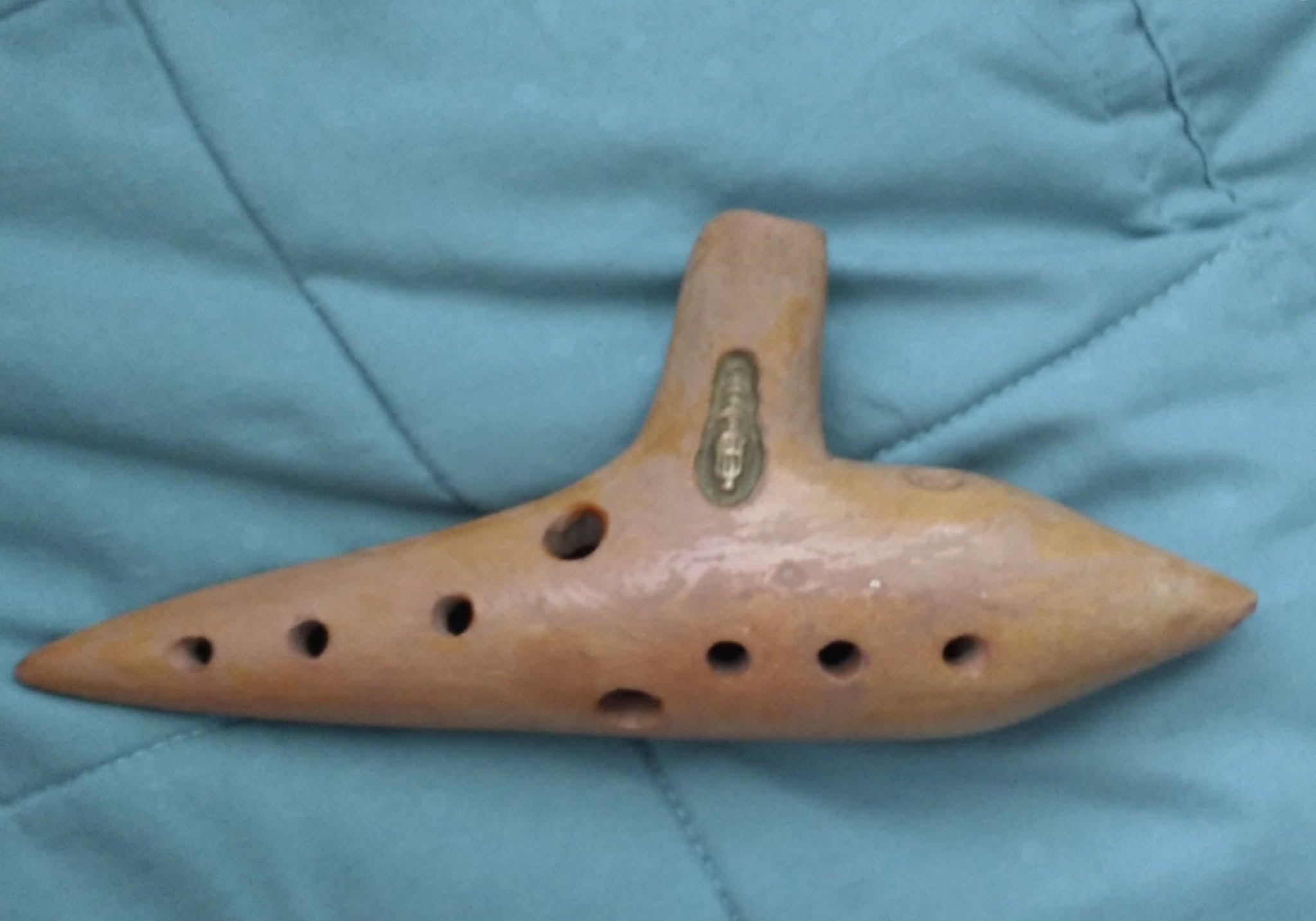I walked into a local thrift store expecting nothing more than the usual assortment of dusty knickknacks and forgotten treasures. I wasn’t looking for anything in particular—just browsing to kill some time. Then something odd caught my eye: a strange little object shaped like a submarine, or maybe like a whistle that somehow got crossed with a potato.

Curious, I picked it up and turned it over. That’s when I saw the inscription: “Ant. Canella Ferrara, Italy.” It was ceramic, clearly handmade, and had a beautiful glaze. The price tag? Just one dollar. Without hesitation, I bought it. Once I got home, I decided to do some research to figure out exactly what I had stumbled upon. It turns out I had picked up an Antonio Canella ocarina—a handcrafted musical instrument from Ferrara, Italy. I had unknowingly brought home a small piece of Italian musical heritage. The ocarina is a very old wind instrument, and different versions of it have appeared in cultures around the world for centuries. It’s been found in ancient Chinese, Mesoamerican, and European traditions.
The modern ocarina, the one that looks like a sweet potato with holes, was popularized in the mid-1800s by Giuseppe Donati of Budrio, Italy. Ferrara, where my ocarina was made, became a key location for crafting these unique instruments, and Antonio Canella was one of the notable names to carry on the tradition. His instruments are prized for their craftsmanship, playability, and hauntingly beautiful sound. My ocarina is a ten-hole transverse model, made of ceramic and glazed in a warm brown hue with a golden stamp near the mouthpiece. It has ten finger holes and one thumb hole underneath.
When I hold it, it feels both sturdy and delicate at the same time, the kind of feel you only get from something that’s been lovingly made by hand. Blowing into it produces a soft, airy sound that’s hard to describe. It’s not a whistle. It’s not a flute. It has a tone that feels ancient and almost otherworldly. There’s something about the sound that immediately transports you—it’s both eerie and comforting, like a lullaby from another time. I was even more surprised to find out how much these ocarinas can be worth. Depending on the condition, tuning, and age, Antonio Canella ocarinas can sell for anywhere from $30 to over $100.
Some especially rare or pristine ones go for $120 or more. And to think, I found mine sitting on a thrift store shelf for just a buck, a little chipped but still entirely functional and beautifully resonant. One of the things that makes ocarinas so special is their distinct sound. It’s soft, nostalgic, and dreamy—very different from a recorder’s sharp pitch or a flute’s polished tone. Playing an ocarina feels like stepping into a different world, and it’s the kind of instrument that sparks curiosity. People will often ask if it’s from The Legend of Zelda or if it’s really an ocarina, and either way, it gets a conversation going. I genuinely think anyone who appreciates music or unique collectibles should have at least one ocarina. Whether you play it, display it, or just like the look of it, an ocarina—especially one marked “Ant. Canella Ferrara, Italy”—is something special. If you ever come across one, grab it. You won’t regret it. That day at the thrift store reminded me how easily we overlook amazing finds simply because we don’t recognize them at first glance. There’s something magical about discovering a treasure like that in such an unexpected place. So next time you’re browsing through a shelf full of odds and ends, take a closer look. Flip things over. Check for stamps or markings. You never know when you’ll uncover a piece of musical history—just like I did with my Antonio Canella ocarina from Ferrara, Italy.





